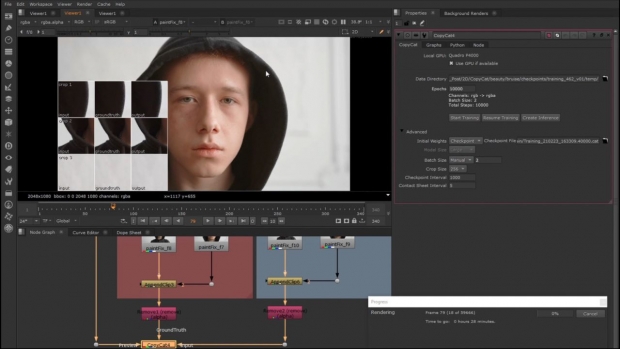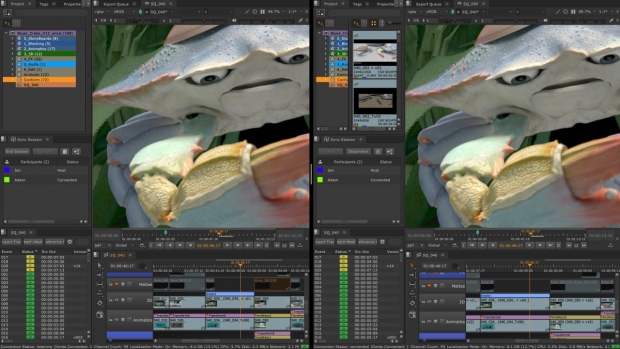New version introduces flexible machine learning toolset, Hydra 3D viewport renderer and extended monitor out functionality, enhanced workflows for collaborative review, and Python 3 support.
Kicking off the next series of Nuke releases, Foundry has announced the release of Nuke 13. The release introduces a flexible machine learning toolset, a new Hydra 3D viewport renderer and extended monitor out functionality, enhanced workflows for collaborative review, and Python 3 support.
Developed by Foundry’s A.I. research team, Nuke 13 enables artists to create bespoke effects with a high-quality result in relatively little time. Applications of the flexible toolset include upres, removing motion blur, tracker marker removal, beauty work, and garbage matting. It allows artists to harness the power of machine learning directly in the software.
Key components of the machine learning toolset include:
CopyCat - An artist can create an effect on a small number of frames in a sequence and train a network to replicate this effect with the CopyCat node. This artist-focused shot-specific approach enables the creation of high-quality, bespoke models relatively quickly within Nuke without custom training environments, complex network permissions, or sending data to the cloud.
Inference - The node that runs the neural networks produced by CopyCat, applying the model to your image sequence or another sequence.
Upscale and Deblur - Two new tools for common compositing tasks were developed using the ML methodology behind CopyCat and open-source MLServer. The ML networks for these nodes can be refined using CopyCat to create even higher-quality shots or studio-specific versions in addition to their primary use for resizing footage and removing motion blur.
Nuke 13.0 also includes the introduction of Hydra support within Nuke’s 3D viewport, this offers a higher quality image much closer to Scanline Renderer’s output, enabling artists to work closer to their final image. Using hdStorm for rendering also provides a more consistent experience to other applications using Hydra.
Sync Review, originally Introduced in Nuke 12.2, has been extended to support syncing of editorial actions as well as playback and annotations. Now fully supported in Nuke Studio, Hiero, and HieroPlayer, Sync Review offers a new way to collaborate on review remotely and share the vision of the final image.
“This release presents the biggest step forward for artists using Nuke,” commented Foundry senior director of product Christy Anzelmo. “Nuke 13.0 combines what we’ve learned from studios over the last year by introducing new technologies that expand what’s possible within Nuke while maintaining the creative workflows and technical control that artists love. With the new machine learning toolset, we are putting the power of machine learning directly into the hands of artists as they can now create bespoke tools to enable them to stay creative, while also addressing the most common VFX challenges for creating high-quality shots.”
“I believe CopyCat will change the way VFX artists work,” noted VFX & compositing supervisor Thiago Porto. “A shot that previously took me three days to create can now be completed in just a few hours, saving a lot of time.”
To learn more about Nuke 13, visit the Nuke releases page.
Source: Foundry










